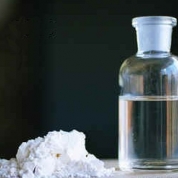GHB (and GBL)

Pharmacology
GHB has an interesting but still greatly undiscovered pharmacology. It was created with the intention to produce an analogue of (or a related compound to) the inhibitory neurotransmitter GABA and thought to act via GABA receptors (mainly GABAB). However, we now know that it stimulates its own distinct GHB receptor, that it is endogenously (naturally) present in the brain, and that GHB actually has a low affinity (ability to bind) for the GABA receptors.
GHB also interacts with the dopaminergic system, and can alter levels of dopamine. In some areas of the brain, it increases, and in others it decreases the levels of dopamine. It is also though to act on serotonergic and opioidergic systems. Interestingly, naloxone and naltrexone has shown to reverse the effects GHB (and GBL) on dopamine release. Much of the research requires further investigation.
GBL is converted into GHB in the body. GBL is more lipophilic (mixes with fat/lipids easily) than GHB, and therefore is absorbed faster in the body than GHB. This means that, paradoxically, GBL can have a faster onset than GHB.
